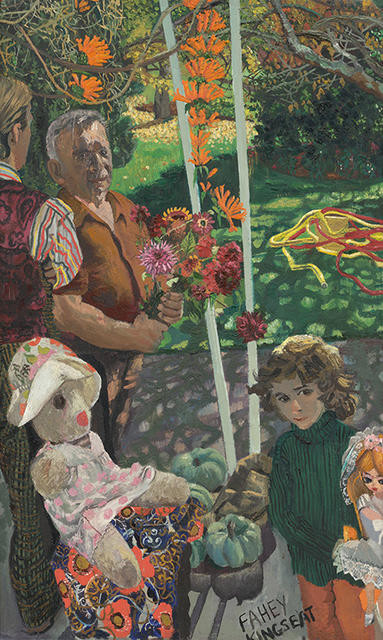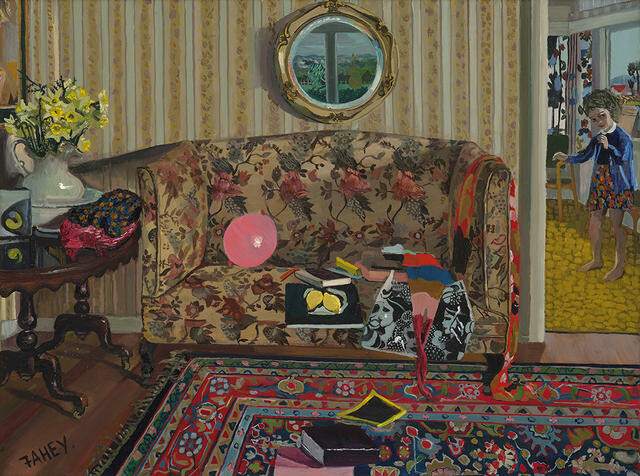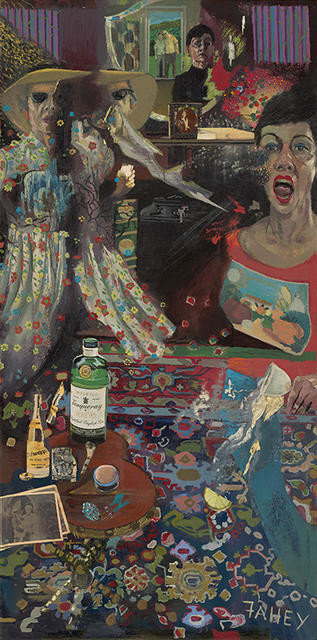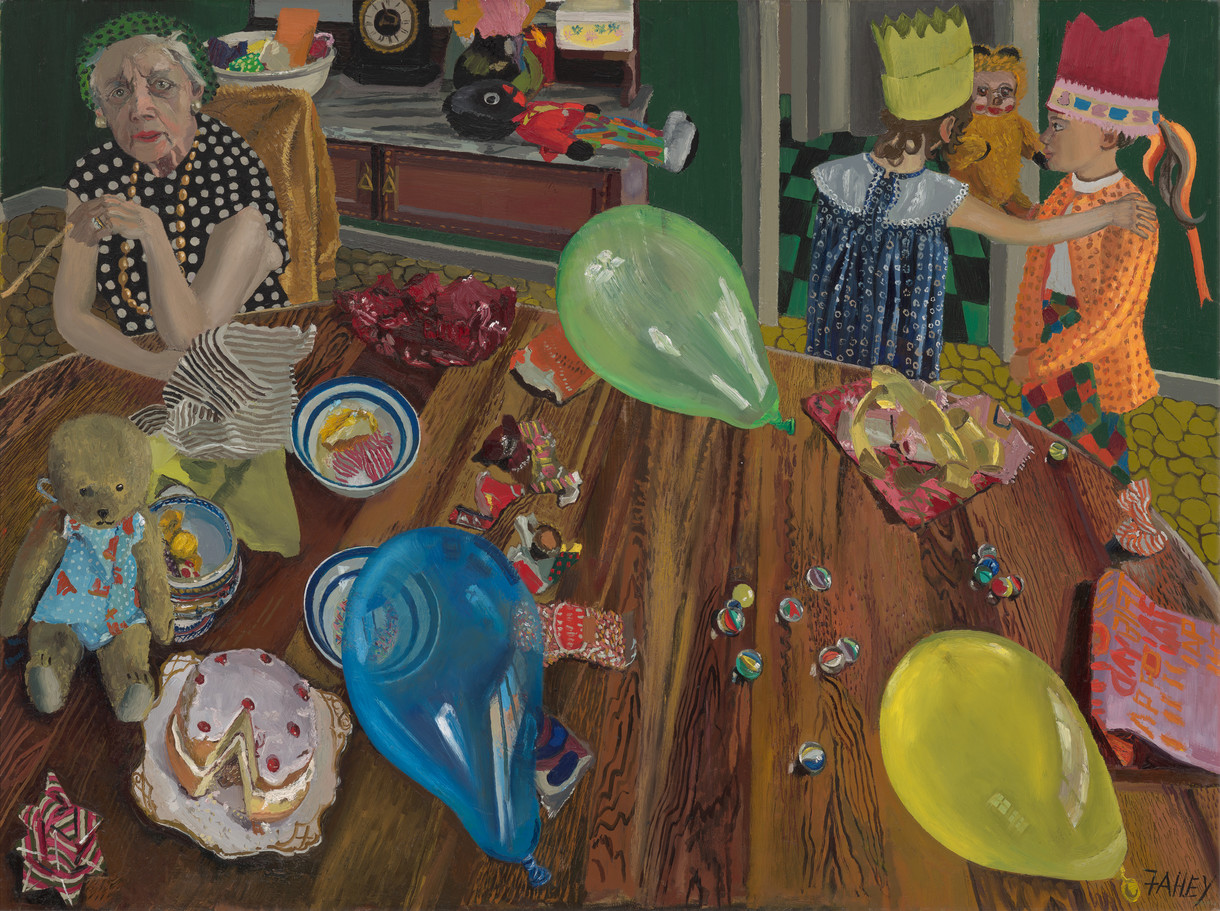Jacqueline Fahey talk
Jacqueline Fahey talk
Jacqueline Fahey interviewed by Felicity Milburn at the Christchurch Gallery Te Puna o Waiwhetū, 10 January 2018.
Please note that this presentation is available as audio only.
Related
Collection

Jacqueline Fahey Speedy's Return
For the exhibition Jacqueline Fahey: Say Something! (22 November 2017 – 11 March 2018) this work was displayed with the following label:
Fahey’s husband, the noted psychiatrist Fraser McDonald, held positions at a number of institutions throughout New Zealand, and they raised their three daughters in a series of houses on hospital grounds. In Porirua, the gardens were overseen by a patient, Mr Quickly (also known as Speedy), who had studied at Kew Gardens in England and worked on a royal estate. He supplied the family with a steady supply of produce and fresh flowers. Fahey recalled that she could cope with the flowers but that the fruit and vegetables, which he clearly expected her to make into preserves, showed up her shortcomings as a ‘proper’ doctor’s wife. When the family moved to Kingseat Hospital, near Auckland, Mr Quickly came with them. This painting, a study in warm autumnal colours and dappled shadows, celebrates what Fahey described as 'the light he brought into all of our lives'.
Collection

Jacqueline Fahey The Portobello Settee
“I think a lot of painters of my era have a hangover from art school days. If you could pull a painting off without a pause – no having to backtrack, no laborious re-worked areas, no long delays to work out the next move – all of it effortless, then you inspired the admiration of the other students. I think it was a sort of sympathetic magic: if the artist enjoyed painting it so much then people must enjoy looking at it as much […] This painting belongs with that kind of response – it just went like a bird. I felt certain of my vision, certain I could endow my humble objects with mana because for a while they were totally beautiful to me. My need to record was intense, innocent and certain. No intellectual calculations crept in to cloud my vision. It was pleasure all the way through. I know this is a form of art snobbery. I know I have done other paintings equally good which arrived agonizingly slowly, calculated every inch of the way and very like a game of chess in the thinking out of each move. However, The Portobello Settee is my choice, I suppose because we don’t escape our old values easily”– Jacqueline Fahey in Say Something, Christchurch Art Gallery Te Puna o Waiwhetū, 2017
(Perilous: Unheard Stories from the Collection, 6 August 2022- )
Collection

Jacqueline Fahey Mother and daughter quarrelling
“When Mum first told me not to outstrip my sisters, I felt incensed by her lack of understanding, especially when she was so creative herself. She later decreed that I must devote myself to my children and to [my husband] Fraser; I could no longer put myself first. And so it continued, a futile struggle. Deeply disturbing, and very common between mothers and daughters throughout history. Mothers, out of fear, are determined to find meaning in life. Genetic matter is repeated again and again, as suggested by the Persian carpet, which rises up to compete with the genetic matter pulsing out of our heads. In the mirror my more compassionate alter ego watches, appalled at my lack of control.” —Jacqueline Fahey, 2017
A leading figure of Aotearoa’s feminist art movement from the 1970s onward, Allie Eagle found a strong role model in Jacqueline Fahey’s art. She said: “What was exciting about Jacquie’s work was the domestic interior, subverted away from the male-view pleasantries of ‘woman happily domiciled’ into painted rage and honest truth about suburban women’s reality (well… some women’s reality). Her paintings worked powerfully and satisfyingly into the idea of women speaking for and about themselves.”
(Perilous: Unheard Stories from the Collection, 6 August 2022- )
Exhibition
Jacqueline Fahey: Say Something!
22 November 2017 – 11 March 2018
Overflowing with love, conflict and quiet despair, Fahey’s paintings from the 1970s bristle with the intensity of domestic life.
